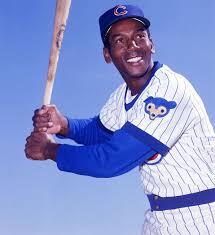Hey baseball fans!
The 2020 playoffs are officially here, with a few notable curse-breakers in the bracket. The Marlins, White Sox, and Padres all snapped massive playoff droughts when they clinched playoff berths this season, with the Marlins and Padres going from last place in their respective divisions in 2019 to the postseason in 2020. Worst-to-first teams have become more common in baseball with the popularity of free agency and the rise of analytics, but I want to talk about the first worst-to-first teams in baseball history, the 1991 Atlanta Braves and Minnesota Twins. That's right: they did it in the same year and, get this, both made the World Series that year.
Before the Braves won 14 straight division titles from 1991-2005, they were a struggling franchise in the National League West. They finished the 1990 season with a 65-97 record, good for last place. They had pieces, like star pitchers Tom Glavine and Steve Avery, but Greg Maddux was still in Chicago at this time and John Smoltz wasn't the Hall of Famer we all know and love. So, the Bravos went to free agency. Terry Pendleton, a third baseman for the Cardinals, happened to be available, so Atlanta signed him. Boy, what a move, that was. Pendleton would go on to win the 1991 NL MVP by leading the Senior Circuit in hits (187) and batting average (.319). Hall of Famer Tom Glavine made his first All Star Game, won 20 games, and grabbed the 1991 NL Cy Young Award. The rest of the Braves did really well, too, winning 94 games and the NL West by a single game over the Dodgers. They then beat the Pirates in the NLCS to advance to the franchise's first World Series since 1958, where they would face the Minnesota Twins.
The 1990 Twins, three years removed from a World Series title, disappointed the Land of 10,000 Lakes, only winning 74 games and finishing in the basement of the AL West. Then, in the offseason, they signed slugger Chili Davis and the winningest pitcher of the 1980s and St. Paul native, Jack Morris. They also brought up speedy second base prospect Chuck Knoblauch. Alongside Hall of Famer Kirby Puckett and Twins legend Kent Hrbek, these new stars flourished. Davis hit 29 homers and drove in 93 runs, Morris won 18 games, and Knoblauch stole 25 bases and won AL Rookie of the Year. Couple those stats with solid seasons from Puckett and Hrbek, and the '91 Twins were in business from the get-go. They won 95 games, the AL West, and the AL pennant, setting up the first all-worst-to-first World Series.
The 1991 World Series is ranked by many, including myself, as the top edition of the World Series in baseball history. Five games were decided by one run, four were decided in the final at-bat, and three went to extras. Was this World Series primed to be this good because of the way the teams got to it? I certainly think so. Thanks for reading this post and I hope you enjoyed it. Check back soon for more of "all the buzz on what wuzz."



